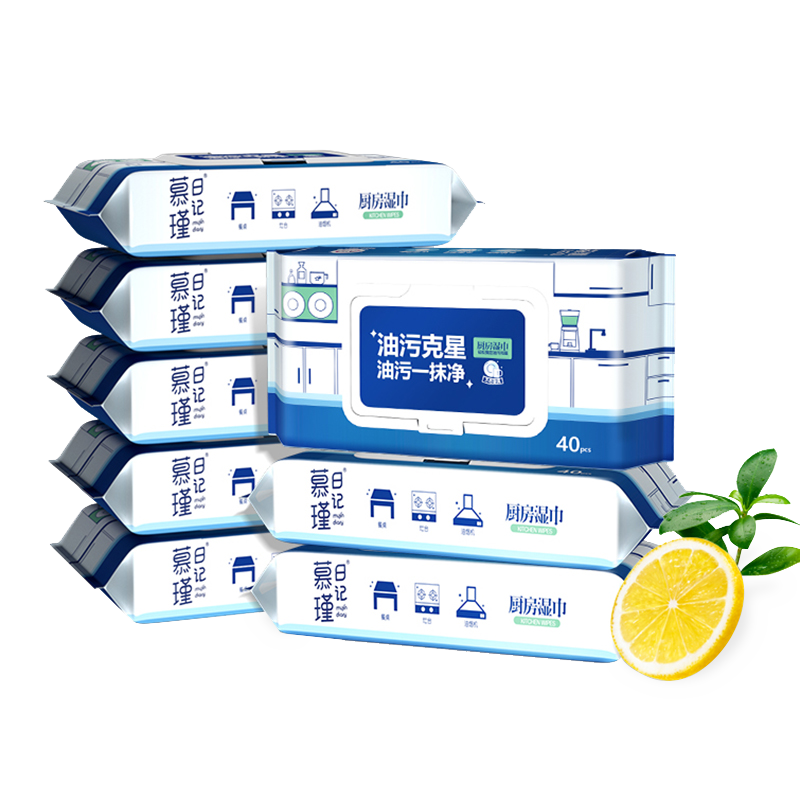Product Consultation
Your email address will not be published. Required fields are marked *
When you wipe the kitchen counter after dinner, you might feel confident the surface is “clean.” But does that mean it’s disinfected? In short, cleaning removes visible dirt, grease and many microbes through mechanical action and detergents; disinfecting uses a chemical agent to kill a defined percentage of germs on a surface. Kitchen cleaning wipes are formulated across a spectrum — some are primarily cleaners, some are disinfectants, and some claim both functions. Understanding ingredients, labeled claims, and correct use is essential to turn a “clean” surface into a truly disinfected one when needed.
Manufacturers design wipes for different priorities: grease removal, daily surface maintenance, fragrance, or germ control. Typical functional components include surfactants (soaps/detergents) to lift soils, solvents to dissolve grease, preservatives to keep the wipe moist and stable, and—if making disinfecting claims—an active antimicrobial ingredient.
Active antimicrobial agents commonly found in wipes include alcohol (ethanol or isopropyl alcohol), quaternary ammonium compounds (“quats”), hydrogen peroxide, and — less commonly in wipes — sodium hypochlorite (bleach) at low concentrations. Each has strengths and limits:
The fastest way to know whether a kitchen wipe disinfects is to read the label. Products that claim to “disinfect,” “kill 99.9% of bacteria,” or list specific organisms (e.g., Staphylococcus aureus, E. coli, influenza virus) are making antimicrobial claims that are regulated in many countries. Look for indications such as:
If a package only says “cleans” or “removes dirt and grease” without specifying kill claims or an active antimicrobial ingredient, the product is primarily a cleaner — useful for appearance and reducing organic load, but not guaranteed to disinfect.
A disinfectant only kills microbes if it remains wet on the surface for a specified period (the “contact time”). Contact times vary by active ingredient and target organism — often from 30 seconds up to 10 minutes. Wipes can be problematic because:
Best practice: if a wipe is labeled as a disinfectant, follow the directions strictly — wipe the surface and allow it to air dry for the stated contact time. If the wipe does not keep the surface wet for that period, you can either repeat application or use a spray/solution and keep the surface wet with a clean cloth for the duration.

Follow these steps to move beyond surface cleaning and toward real disinfection:
Wipes are excellent for quick daily cleanup, spot-degreasing, and surface maintenance. However, there are situations where wipes may not be the best choice:
Some disinfectant chemistries can damage finishes or leave residues that taste or smell odd on food preparation surfaces. Guidance:
Wipes generate solid waste and may contain chemicals that are not ideal for septic systems or waterways. Follow these practices to reduce risk:
| Function | What it does | When to use | Limitations |
| Cleaner wipe | Removes grease and visible soil; may reduce microbes by physical removal | Daily maintenance, quick cleanups | Does not reliably kill pathogens |
| Disinfectant wipe | Chemically inactivates/kills specified microbes when used per label | When pathogen reduction is a priority (illness in household, high-touch areas) | Requires correct contact time and may be less effective if surface is soiled |
Yes — some kitchen wipes are formulated and labeled to disinfect, while others are designed purely to clean. The difference lies in the active ingredient, the label claims, and how you use the product. To achieve disinfection with a wipe, choose a product explicitly labeled as a disinfectant (or EPA/regulated equivalent if applicable), follow the directions, and ensure the surface remains wet for the stated contact time. For routine grease and food residue removal, a good cleaner wipe or a detergent-and-rinse method is more appropriate.
Your email address will not be published. Required fields are marked *
You can contact to me using this form.
Copyright © 2023 Shanghai Taicikang Industrial Co., Ltd. All Rights Reserved.
